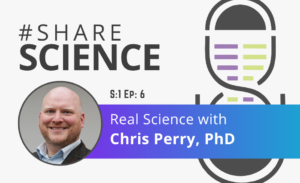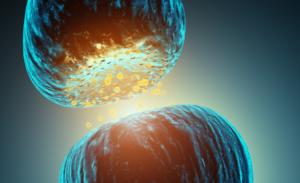Investigating Muscle Weakness and Fatigue with the MHRC
No other body part moves us quite like the skeletal muscles do. As the most abundant muscle type in the human body, this often overlooked organ affects not only movement, but also respiratory function and metabolism, and can greatly impact quality of life. York University’s Muscle Health Research Centre (MHRC) is Canada’s leading facility in skeletal muscle research, and is home to many researchers who push the boundaries of what is known about muscle physiology. For this blog, we summarize interviews with two professors from the MHRC who investigate the mechanisms of muscle weakness and fatigue: Christopher Perry and Arthur Cheng.
Mitochondrial stress in muscle weakness disorders
Christopher Perry, PhD, is an associate professor at the MHRC whose laboratory primarily examines mitochondrial stress response in muscle weakness disorders such as Duchenne muscular dystrophy and cancer-induced cachexia. For these experiments, various muscles (e.g., diaphragm, quadriceps) from mice are isolated, after which muscle force production is measured using the 1300A 3-in-1 Whole Animal System by Aurora Scientific.
“[With this system]…we’re able to measure force production in muscles in vivo in the mouse, in situ, and in vitro.”

Professor Perry also often partners with pharmaceutical companies to develop new therapies for restoring healthy metabolism in muscle. This helps improve mobility, respiratory function, as well as myocardial function.
Analyzing the mechanism of skeletal muscle cell weakness

Arthur Cheng, PhD, is an assistant professor whose laboratory investigates the mechanism of skeletal muscle weakness and fatigue, and the impact of calcium handling on these mechanisms. Professor Cheng hopes to improve athlete training methodologies, as understanding the underlying mechanisms of fatigue could help optimize future exercise programs. To elucidate these fundamental mechanisms, Professor Cheng utilizes a variety of models, from analyzing whole body exercise in humans all the way down to testing the output from a single muscle fiber. Modeling the effects of skeletal muscle fatigue in not just the cell, but an entire organism, provides an opportunity to understand every nuance of muscle fatigue.
“If we understand the mechanisms [of muscle fatigue], we can figure out how to improve the training methodologies that we use as athletes and we can also figure out effective nutritional aids to accompany those methodologies.”
One benefit of studying individual skeletal muscle cells is that the contributions of calcium to skeletal muscle function can be determined. Calcium is a major generator of force in skeletal muscles; by observing the effects of a specific force on a single cell, these effects can be extrapolated to the entire organism. Once an individual muscle fiber is isolated, Professor Cheng’s laboratory utilizes the 1400A Permeabilized Fiber System by Aurora Scientific to model the effects of fatigue in the cell, and to administer various drug or glucose treatments. This instrument can also control and measure the power, resistance, and force of any permeable fiber, making it extremely valuable for studying muscle physiology.
Additional Content From Aurora Scientific
We were able to produce these interviews in joint partnership with Aurora Scientific. For the last 30 years, Aurora Scientific has provided life science researchers with reliable, quality instrumentation within the fields of muscle physiology, neuroscience, and materials science. Click here to learn more about how they can support your research!
This episode of Share Science features Christopher Perry, PhD, an Associate Professor at York University, who shares his career path, but also his ideas and goals to further help those with muscle disease and to provide more opportunities for his trainees.
Yalda Moayedi discusses how tongue-innervating neurons can be identified and classified according to their mechanosensory functionalities.
Dr. Andrea Bonetto discusses the importance of musculoskeletal preservation in cancer treatment and shares evidence that bone preservation directly impacts muscle size and function in cachexia.


